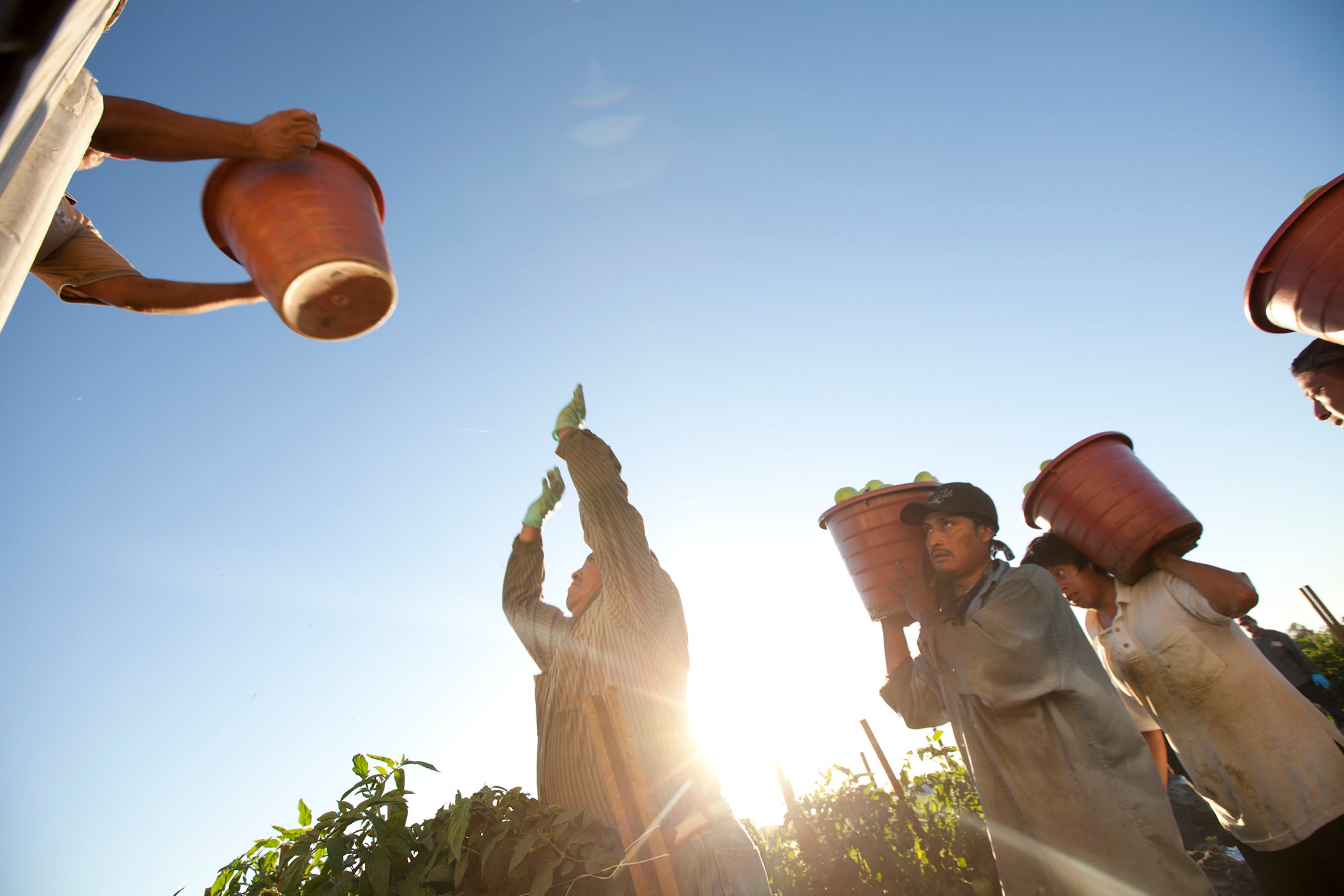CHATLANI: Intersections of Race and Class in the Environment
Posted in In the News Student Leaders | Tagged CIW, Class, Coalition of Immokalee Workers, Environmental Justice, Race, Shalina Chatlani, Working-Class Perspectives
Shalina Chatlani (SFS ’17) interns for Industry Dive and is an Undergraduate Writing Fellow for the Kalmanovitz Initiative. We are proud to host her blog posts on our website, including this thoughtful piece about the intersection of race and class in the environment.
Senator Bernie Sanders’ recent release of a campaign advertisement on the Coalition of Immokalee Workers (CIW) brought national attention to the plight of migrant farmworkers in Florida–a situation that highlights the significant, but often underrepresented, connection of environmental injustice with civil rights and workers’ rights.
I wrote extensively about the CIW for the Kalmanovitz Initiative a year ago, but my research primarily focused on the similarities between civil rights and labor rights movements for blacks and hispanics in the Southern United States. Nonetheless, weaved into the narratives were some striking details that not only shed light on deplorable working conditions of the farms, but also the devastating health effects of environmental negligence:
“Florida’s tomato fields, it turns out, violate “all elements of sustainability,” and only produce a product by pumping the “soil full of chemical fertilizers” as well as “more than one hundred different herbicides and pesticides.” Unfortunately, workers in the tomato fields bear the burden of these horrific environmental conditions. The toll that workers face is staggering, and it is the result of the poor circumstances in which the tomatoes are grown. For instance, the chemicals that tomato pickers are exposed to on a daily basis lead to “eye and respiratory ailments, exposure to known carcinogens, and babies born with horrendous birth defects.”
All throughout the United States, environmental concerns plague workers. Whether the scenario ranges from breathing in the exhaust fumes to becoming exposed to cancerous carcinogens via chemicals on farms, the environment plays an important role in the relationship between socioeconomics and race. The reality is that low-income and minority communities often face a disproportionate share of environmental costs. As a report from the Global Development and Environment Institute at Tufts University notes:
“People with low incomes and inadequate access to health care may also be disproportionately exposed to environmental contamination that threatens their health.”
It’s true there aren’t a lot of studies that say exactly this: low-income workers bear a significant portion of environmental pollution and its consequences. Yet within all the literature on environmental injustice there sits within the lines a glaring, unignorable link.
A recent blog post on the the KI’s Working-Class Perspectives page highlights how occupational hazards and stress can lead to a number of ills, such as cardiovascular disease and mental health disorders. The CIW migrant laborers on farms clearly face the environmental hazards of chemical use on the job, and they have appealed to civil rights groups about it.
The evidence of inequity in the workplace is chilling and angering: low-income workers not only continue to face a considerable number of workplace dangers, but also suffer from health concerns. The following realization sends even more chills down the spine: when low-income minority workers go home, the environmental hazards often remain.
There are many examples to pull from, but let us just consider one for now: air pollution.
Recent studies show that non-whites are more exposed environmental pollution than whites. Moreover, further research concludes that air pollution tends to be disproportionately centered in low-income, minority group communities.
Industries might not set out to torment underprivileged Americans with hazardous air toxins. However, the reality is still that “minorities [receive] nearly 40% more exposure to deadly airborne pollutants than whites,” according to a study from 2014. Not “meaning” to adversely affect minority communities does not excuse the industries, state enforcement, or the EPA’s handling air pollution in low-income areas.
In fact, the U.S. Commission on Civil Rights announced in 2015, largely in response to an increasing number of complaints, that its 2016 enforcement report would investigate specific concerns of minority and low-income communities about “possible violations of environmental and civil rights laws resulting from improper generation, storage, transfer and siting of toxic materials by public utilities and other sources near minority residential areas.”
Low-income communities, typically forced to live in undesirable neighborhoods close to coal factories and high-traffic roadways, continually face the environmental and health consequences of highly NO2 concentrated air. According to study, as cited in an article from Common Dreams:
“The health impacts from the difference in levels between whites and nonwhites found in the study are substantial. For example, researchers estimate that if nonwhites breathed the lower NO2 levels experienced by whites, it would prevent 7,000 deaths from heart disease alone among nonwhites each year.”
This means low-income, minority group workers – who are already dealing with issues of finding proper work and keeping their lives afloat – must also deal with the consequences of environmental degradation such as asthma and heart disease when they return home.
The health effects of air pollution in communities can saddle citizens with extravagant health care bills, compromise their ability to perform their jobs, and cause unwanted stress that only adds to the pressures they might feel from unfavorable working conditions. For this reason, literature on the American working class must pay more attention to the correlations among race, socioeconomics, and environmental injustice.
You can read more from Shalina on our website.

